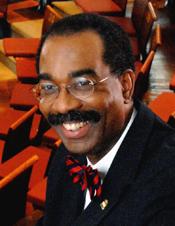 What’s on my mind this month are two important issues before the U.S. Congress that directly affect the School of Medicine: passing the 21st Century Cures bill, and amending the Higher Education Act of 1965.
What’s on my mind this month are two important issues before the U.S. Congress that directly affect the School of Medicine: passing the 21st Century Cures bill, and amending the Higher Education Act of 1965.
The American research enterprise, long the world’s gold standard for scientific progress, is at risk of slipping behind. For many years, the NIH and other science agencies have operated under a continuing resolution, which has created tremendous uncertainty. The federal government has pulled back financial support for biomedical research, but by targeting research spending, this country risks a discovery deficit.
Academic institutions like ours need consistency in federal funding so that we can align the size of our training programs to fit our future research workforce. The University of Maryland School of Medicine has made immense contributions to science, including the discovery of restriction enzymes, which gave birth to genetic engineering; the identification of the three types of polio virus; the discovery of a new class of drugs to treat breast cancer; and the development of vaccines for pandemic influenza and the most recent Ebola outbreak. Without NIH-funded basic research, none of these advances would have reached a single patient.
The 21st Century Cures bill demonstrates a resurgence of interest in Congress in the health of our biomedical research ecosystem. The bill would give the NIH an extra $8.75 billion over five years through a new, so-called innovation fund. Specific projects, such as research into personalized medicine, would receive support from a pot of $500 million per year.
Most importantly, the remaining money would support young scientists and higher-risk projects with the potential for incredible rewards. Falling behind in research support translates into people turning away from careers in science, and an increasing inability to encourage new investigators to enter academic professions. Because we have siphoned off federal research funding, we have triggered a shortfall in academically-trained physicians, physician-scientists and scientists. In essence, we have thwarted efforts to increase young people’s interest in STEM (science, technology, engineering and mathematics) careers by constricting salary support and stimulating a surplus of competition for grants and jobs in many of these fields.
The Foreign Medical School Accountability Fairness Act would protect all medical students, and save U.S. taxpayer dollars, by closing a loophole that gives special treatment to a small number of medical schools in the Caribbean. The loophole allows for-profit medical schools in the Caribbean to enroll large percentages of American students without meeting the same standards or the basic requirements of U.S. and foreign medical schools. In 2012, those schools took in more than $450 million in U.S. Department of Education Title IV funding.
The Act’s simple fix would apply the following two requirements to all medical schools outside of the United States and Canada: at least 60 percent of the enrollment must be non-U.S. citizens or permanent residents, and students must have at least a 75 percent pass rate on the U.S. Medical Licensing Exam. These are the same requirements of students at the School of Medicine, which help to ensure students’ progress and success in their education, up through residency matching.
For example, the average attrition rate at U.S. medical schools is 3 percent, while rates at for-profit foreign medical schools can be up to 26 percent or higher. Even if students do graduate, they do so with much more debt and often have difficulty finding a residency position. In 2015, foreign-trained, American graduates had a residency match rate of 53 percent, compared to 94 percent of graduates of U.S. medical schools.
Medical science is entering a powerful new era of discovery. Our institutions need sufficient resources and a level playing field in order to seize these massive opportunities and continue advancing knowledge to improve human health. Unfortunately, medical schools are scrambling to recruit and retain gifted scientists and to provide them the state-of-the-art tools they need.
This month’s issue of SOMnews highlights some of the core services provided by the Center for Innovative Biomedical Resources (CIBR) here at the School of Medicine. CIBR itself was made possible through funds secured from the American Recovery and Reinvestment Act, a much-needed, one-time injection of federal dollars into the NIH budget. Although the School of Medicine took full advantage of the Stimulus funds, we need to have more consistent support to sustain our research ecosystem.
Preserving America’s leadership in medical education and global biomedical research will require bold, decisive actions and strategic planning for the long term. Although we await decisions on the 21st Century Cures Act and the Foreign Medical School Accountability Fairness Act, we welcome the renewed attention and urge policymakers to move forward to implement these crucial changes. While we cannot recoup the financial losses of the past few years, these legislative changes will help us regain our footing, and allow us to truly invest in the next big breakthroughs.
In the relentless pursuit of excellence, I am
Sincerely yours,
E. Albert Reece, MD, PhD, MBA
Vice President for Medical Affairs, University of Maryland
John Z. and Akiko K. Bowers Distinguished Professor and Dean, University of Maryland School of Medicine
Congratulations to our very productive faculty on their recent grants and contracts!
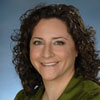 Rebecca Brotman, PhD, MPH, Assistant Professor of Epidemiology & Public Health, Institute for Genome Sciences, received a five-year, $3,527,206 award from the National Institute of Allergy and Infectious Diseases (NIAID) for “A Longitudinal Study on the Role of the Vaginal Microbiota in Protecting Women from Sexually Transmitted Infections.” Co-investigators include Jacques Ravel, PhD, Professor of Microbiology & Immunology and Associate Director for Genomics, Institute for Genome Sciences; and Xin He, PhD, Assistant Professor, Department of Epidemiology & Biostatistics at the University of Maryland, College Park. The project began May 1.
Rebecca Brotman, PhD, MPH, Assistant Professor of Epidemiology & Public Health, Institute for Genome Sciences, received a five-year, $3,527,206 award from the National Institute of Allergy and Infectious Diseases (NIAID) for “A Longitudinal Study on the Role of the Vaginal Microbiota in Protecting Women from Sexually Transmitted Infections.” Co-investigators include Jacques Ravel, PhD, Professor of Microbiology & Immunology and Associate Director for Genomics, Institute for Genome Sciences; and Xin He, PhD, Assistant Professor, Department of Epidemiology & Biostatistics at the University of Maryland, College Park. The project began May 1.
Timm-Michael Dickfeld, MD, PhD, FACC, FHRS, Associate Professor, Department of Medicine, received a $43,124 grant from Biosense Webster for “Elimination of Premature Ventricular Contractions in Heart Failure (EVAC-HF).”
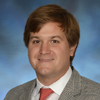 John Eley, PhD, Assistant Professor, Department of Radiation Oncology, has been awarded a Research Seed Grant from the American Association of Physicists in Medicine in the amount of $25,000 for his work on “Microbeam Therapy with Light Ions.”
John Eley, PhD, Assistant Professor, Department of Radiation Oncology, has been awarded a Research Seed Grant from the American Association of Physicists in Medicine in the amount of $25,000 for his work on “Microbeam Therapy with Light Ions.”
 Julie Dunning Hotopp, PhD, Associate Professor of Microbiology & Immunology, Institute for Genome Sciences, received a three-year, $705,332 award from the National Science Foundation for “Cloud-Based Identification and Visualization of Lateral Gene Transfers in Genome Data.” The award goes from June 1, 2015 through May 31, 2018.
Julie Dunning Hotopp, PhD, Associate Professor of Microbiology & Immunology, Institute for Genome Sciences, received a three-year, $705,332 award from the National Science Foundation for “Cloud-Based Identification and Visualization of Lateral Gene Transfers in Genome Data.” The award goes from June 1, 2015 through May 31, 2018.
 Wallace Johnson, MD, Assistant Professor, Department of Medicine, received a $35,727 grant from Takeda Global Research & Development Center, Inc. for “Master Clinical Takeda study TMX-67_301.”
Wallace Johnson, MD, Assistant Professor, Department of Medicine, received a $35,727 grant from Takeda Global Research & Development Center, Inc. for “Master Clinical Takeda study TMX-67_301.”
 Kirsten Lyke, MD, Associate Professor of Medicine, Center for Vaccine Development (CVD), along with co-investigator James Campbell, MD, Associate Professor, Department of Pediatrics, received a 12-month, $266,958, multicenter award from the Vaccine Research Center/NIAID and the EMMES Corporation to complete “A Phase 1/1b, Open-Label, Dose-Escalation Clinical Trial to Evaluate the Safety, Tolerability and Immunogenicity a Recombinant Modified Vaccinia Virus Ankara Ebola Vaccine, VRC-EBOMVA079-00-VP (MVA-EbolaZ), Administered Alone or as a Boost to cAd3-Ebola Vaccines in Healthy Adults.” In collaboration with investigators at Leidos Corporation and Emory University, Dr. Lyke was awarded a five-year, $23,756,578 sub-contract from USAIO to develop a “Proof of Concept Malaria Vaccine Development Program (MVDP).” Dr. Lyke and Andrea Berry, MD, Assistant Professor of Pediatrics in the CVD, received a five-year, $1,617,653, R01 research grant to study “A Systems Biology Approach to Malaria Immunity,” in collaboration with Dr. Kim Williamson of Loyola University. Dr. Lyke and Monica McArthur, MD, PhD, Assistant Professor of Pediatrics, and Robert Edelman, MD, Clinical Professor of Medicine, both also from CVD, were awarded a $961,982 contract from the Surgeon General, Department of the Army, in collaboration with investigators at WRAIR and GSK to study “A Phase 1/2, Randomized, Observer-Blind Study of Varying Injection Schedules of a Tetravalent Dengue Virus Purified Inactivated Vaccine (TDENV-PIV) with AS03B Adjuvant and Placebo in Healthy Adults in the US.”
Kirsten Lyke, MD, Associate Professor of Medicine, Center for Vaccine Development (CVD), along with co-investigator James Campbell, MD, Associate Professor, Department of Pediatrics, received a 12-month, $266,958, multicenter award from the Vaccine Research Center/NIAID and the EMMES Corporation to complete “A Phase 1/1b, Open-Label, Dose-Escalation Clinical Trial to Evaluate the Safety, Tolerability and Immunogenicity a Recombinant Modified Vaccinia Virus Ankara Ebola Vaccine, VRC-EBOMVA079-00-VP (MVA-EbolaZ), Administered Alone or as a Boost to cAd3-Ebola Vaccines in Healthy Adults.” In collaboration with investigators at Leidos Corporation and Emory University, Dr. Lyke was awarded a five-year, $23,756,578 sub-contract from USAIO to develop a “Proof of Concept Malaria Vaccine Development Program (MVDP).” Dr. Lyke and Andrea Berry, MD, Assistant Professor of Pediatrics in the CVD, received a five-year, $1,617,653, R01 research grant to study “A Systems Biology Approach to Malaria Immunity,” in collaboration with Dr. Kim Williamson of Loyola University. Dr. Lyke and Monica McArthur, MD, PhD, Assistant Professor of Pediatrics, and Robert Edelman, MD, Clinical Professor of Medicine, both also from CVD, were awarded a $961,982 contract from the Surgeon General, Department of the Army, in collaboration with investigators at WRAIR and GSK to study “A Phase 1/2, Randomized, Observer-Blind Study of Varying Injection Schedules of a Tetravalent Dengue Virus Purified Inactivated Vaccine (TDENV-PIV) with AS03B Adjuvant and Placebo in Healthy Adults in the US.”
 Jacques Ravel, PhD, Professor of Microbiology & Immunology and Associate Director, Genomics, Institute for Genome Sciences, received a five-year $79,229 award from the NIH to contribute vaginal microbiome expertise for a project entitled “Study of Women’s Health Across the Nation (SWAN),” which is led by the University of California, Davis and is entering its 16th year. This fourth phase of the project in part aims at understanding the changes in the vaginal microbiota in women throughout the menopausal transition and in older age.
Jacques Ravel, PhD, Professor of Microbiology & Immunology and Associate Director, Genomics, Institute for Genome Sciences, received a five-year $79,229 award from the NIH to contribute vaginal microbiome expertise for a project entitled “Study of Women’s Health Across the Nation (SWAN),” which is led by the University of California, Davis and is entering its 16th year. This fourth phase of the project in part aims at understanding the changes in the vaginal microbiota in women throughout the menopausal transition and in older age.
 William Regine, MD, Professor and the Isadore & Fannie Schneider Foxman Chair, Department of Radiation Oncology, was awarded a $10,000 UM Ventures Seed Grant for development of a novel treatment approach for radiation-induced mucositis. JW Snider, MD, Resident, will be a co-developer.
William Regine, MD, Professor and the Isadore & Fannie Schneider Foxman Chair, Department of Radiation Oncology, was awarded a $10,000 UM Ventures Seed Grant for development of a novel treatment approach for radiation-induced mucositis. JW Snider, MD, Resident, will be a co-developer.
Simeon Taylor, MD, PhD, Professor, Department of Medicine, received a two-year, $422,215 grant from the National Institute of Diabetes, Digestive, and Kidney Diseases (NIDDK) for “Pharmacogenomics of SGLT2 Inhibitors: Pilot & Feasibility Study.” He also received a five-year, $1,116,407, T32 training grant from NIDDK for “Diabetes and Its Metabolic Complications.”
 Terry Watnick, MD, Associate Professor, Department of Medicine, received a five-year, $5,831,412 grant from the National Institute of Diabetes & Digestive Kidney Diseases (NIDDK) for “Baltimore Polycystic Kidney Disease Research and Clinical Core Center.”
Terry Watnick, MD, Associate Professor, Department of Medicine, received a five-year, $5,831,412 grant from the National Institute of Diabetes & Digestive Kidney Diseases (NIDDK) for “Baltimore Polycystic Kidney Disease Research and Clinical Core Center.”
Jixin Zhong, MD, Assistant Professor, Department of Medicine, received a $77,000 National Scientist Development grant from the American Heart Association for “DPP4 Links Lipidemia and Inflammation, Forming a Feed-Forward Loop in Atherosclerosis.”
Hats off to those who have been published!
 Agnes Azimzadeh, PhD, Associate Professor; Branko Bojovic, MD, Assistant Professor; Stephen Bartlett, MD, Chair and the Peter Angelos Distinguished Professor in Surgery; and Rolf Barth, MD, Associate Professor, all from the Department of Surgery, were among the co-authors on “Early Microchimerism After Face Transplantation Detected by Quantitative Real-Time Polymerase Chain Reaction of Insertion/Deletion Polymorphisms” in Transplantation, 2015 Jul;99(7):e44-e45.
Agnes Azimzadeh, PhD, Associate Professor; Branko Bojovic, MD, Assistant Professor; Stephen Bartlett, MD, Chair and the Peter Angelos Distinguished Professor in Surgery; and Rolf Barth, MD, Associate Professor, all from the Department of Surgery, were among the co-authors on “Early Microchimerism After Face Transplantation Detected by Quantitative Real-Time Polymerase Chain Reaction of Insertion/Deletion Polymorphisms” in Transplantation, 2015 Jul;99(7):e44-e45.
Shahed Badiyan, MD, Clinical Assistant Professor, Department of Diagnostic Radiology & Nuclear Medicine, was among the authors on “Effect of High-Dose Stereotactic Body Radiation Therapy on Liver Function in the Treatment of Primary and Metastatic Liver Malignancies Using the Child-Pugh Score Classification System” in Practical Radiation Oncology, 2015 May-Jun;5(3):176–182. In the same journal (2015 May-Jun;5:e193-e199), he was among the co-authors on “Comparison of Implanted Fiducial Markers and Self-Expandable Metallic Stents for Pancreatic Image-Guided Radiation Therapy Localization.” He was also among the co-authors on “Clinical and Dosimetric Predictors of Acute Severe Lymphopenia During Radiation Therapy and Concurrent Temozolomide for High-Grade Glioma” in International Journal of Radiation Oncology, Biology, Physics, 2015 Aug 1;92(5):1000-7.
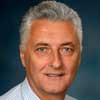 D. Hunter Boggs, MD, Resident; Mariana Guerrero, PhD, Clinical Associate Professor; Kruti Patel, MD, Resident; Shifeng Chen, PhD, Assistant Professor; Pradip Amin, MD, Associate Professor; and Zeljko Vujaskovic, MD, PhD (pictured), Professor, all from the Department of Radiation Oncology, and Fred Moeslein, MD, PhD, Assistant Professor, Department of Diagnostic Radiology & Nuclear Medicine, were among the co-authors on “Pelvic Local Recurrence in a Patient with Muscle-Invasive Bladder Cancer Treated with Interstitial Thermal Therapy and Interstitial Brachytherapy” in Practical Radiation Oncology, 2015 Jun 5 [Epub ahead of print].
D. Hunter Boggs, MD, Resident; Mariana Guerrero, PhD, Clinical Associate Professor; Kruti Patel, MD, Resident; Shifeng Chen, PhD, Assistant Professor; Pradip Amin, MD, Associate Professor; and Zeljko Vujaskovic, MD, PhD (pictured), Professor, all from the Department of Radiation Oncology, and Fred Moeslein, MD, PhD, Assistant Professor, Department of Diagnostic Radiology & Nuclear Medicine, were among the co-authors on “Pelvic Local Recurrence in a Patient with Muscle-Invasive Bladder Cancer Treated with Interstitial Thermal Therapy and Interstitial Brachytherapy” in Practical Radiation Oncology, 2015 Jun 5 [Epub ahead of print].
 Paul Bigeleisen, MD, Professor, Department of Anesthesiology, was lead editor on the second edition of Ultrasound Guided Regional Anesthesia and Pain Medicine, published by Lippincott Williams & Wilkins in April and intended for residents and attendings. The second edition includes 33 new chapters on pain therapy as well as the original 40 chapters dedicated to ultrasound-guided nerve block. The text was supported with grants from the Fulbright Foundation, the National Institutes of Health, and the National Anesthesiology Society of the Netherlands.
Paul Bigeleisen, MD, Professor, Department of Anesthesiology, was lead editor on the second edition of Ultrasound Guided Regional Anesthesia and Pain Medicine, published by Lippincott Williams & Wilkins in April and intended for residents and attendings. The second edition includes 33 new chapters on pain therapy as well as the original 40 chapters dedicated to ultrasound-guided nerve block. The text was supported with grants from the Fulbright Foundation, the National Institutes of Health, and the National Anesthesiology Society of the Netherlands.
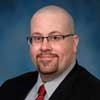 Marcus Chibucos, PhD, Research Associate, Department of Microbiology & Immunology, and Michelle Giglio, PhD, Assistant Professor of Medicine, both also from the Institute for Genome Sciences, co-authored “The Confidence Information Ontology: A Step Towards a Standard for Asserting Confidence in Annotations” in Database, 2015, bav014.
Marcus Chibucos, PhD, Research Associate, Department of Microbiology & Immunology, and Michelle Giglio, PhD, Assistant Professor of Medicine, both also from the Institute for Genome Sciences, co-authored “The Confidence Information Ontology: A Step Towards a Standard for Asserting Confidence in Annotations” in Database, 2015, bav014.
 Natalie Davis, MD, MMSc, Assistant Professor, Department of Pediatrics, authored “Car Seat Screening for Low Birth Weight Term Neonates” in Pediatrics, 2015 Jul;136(1):89-96.
Natalie Davis, MD, MMSc, Assistant Professor, Department of Pediatrics, authored “Car Seat Screening for Low Birth Weight Term Neonates” in Pediatrics, 2015 Jul;136(1):89-96.
 Christopher deFilippi, MD, Associate Professor, Department of Medicine, was among the co-authors on “Recommendations on Pre-hospital & Hospital Management of Acute Heart Failure: A Consensus Paper from the Heart Failure Association of the European Society of Cardiology, the European Society of Emergency Medicine, and the Society of Academic Emergency Medicine” in European Journal of Heart Failure, 2015 Jun;17(6):544-58; “The Kansas City Cardiomyopathy Questionnaire Score Is Associated with Incident Heart Failure Hospitalization in Chronic Kidney Disease Patients Without Previously Diagnosed Heart Failure: The CRIC Study” in Circulation: Heart Failure, 2015 Jul;8(4):702-8; “Structural Heart Disease and ST2: Cross-Sectional and Longitudinal Associations with Echocardiography” in American Journal of Cardiology, 2015 Apr 2;115(7 Suppl):59B-63B; “Soluble ST2 Testing in the General Population” in American Journal of Cardiology, 2015 Apr 2;115(7 Suppl):22B-5B; and “High-Sensitivity Troponin T and N-terminal Pro-B-type Natriuretic Peptide (NT-proBNP) and Risk of Incident Heart Failure in Patients with CKD: The Chronic Renal Insufficiency Cohort (CRIC) Study” in the Journal of the American Society of Nephrology, 2015 Apr;26(4):946-56. Dr. deFilippi and Stephen Seliger, MD, MS, Associate Professor, Department of Medicine, were the co-authors on “Natriuretic Peptide and Cardiovascular Risk: Is It About “U”?” in Journal of the American Heart Association, 2015 May 21;4(5):e002086. And Dr. deFilippi and Robert Christenson, PhD, Professor, Department of Pathology, were among the co-authors on “Midregional Proadrenomedullin Predicts Mortality and Major Adverse Cardiac Events in Patients Presenting With Chest Pain: Results From the CHOPIN Trial” in Academic Emergency Medicine, 2015 May;22(5):554-63.
Christopher deFilippi, MD, Associate Professor, Department of Medicine, was among the co-authors on “Recommendations on Pre-hospital & Hospital Management of Acute Heart Failure: A Consensus Paper from the Heart Failure Association of the European Society of Cardiology, the European Society of Emergency Medicine, and the Society of Academic Emergency Medicine” in European Journal of Heart Failure, 2015 Jun;17(6):544-58; “The Kansas City Cardiomyopathy Questionnaire Score Is Associated with Incident Heart Failure Hospitalization in Chronic Kidney Disease Patients Without Previously Diagnosed Heart Failure: The CRIC Study” in Circulation: Heart Failure, 2015 Jul;8(4):702-8; “Structural Heart Disease and ST2: Cross-Sectional and Longitudinal Associations with Echocardiography” in American Journal of Cardiology, 2015 Apr 2;115(7 Suppl):59B-63B; “Soluble ST2 Testing in the General Population” in American Journal of Cardiology, 2015 Apr 2;115(7 Suppl):22B-5B; and “High-Sensitivity Troponin T and N-terminal Pro-B-type Natriuretic Peptide (NT-proBNP) and Risk of Incident Heart Failure in Patients with CKD: The Chronic Renal Insufficiency Cohort (CRIC) Study” in the Journal of the American Society of Nephrology, 2015 Apr;26(4):946-56. Dr. deFilippi and Stephen Seliger, MD, MS, Associate Professor, Department of Medicine, were the co-authors on “Natriuretic Peptide and Cardiovascular Risk: Is It About “U”?” in Journal of the American Heart Association, 2015 May 21;4(5):e002086. And Dr. deFilippi and Robert Christenson, PhD, Professor, Department of Pathology, were among the co-authors on “Midregional Proadrenomedullin Predicts Mortality and Major Adverse Cardiac Events in Patients Presenting With Chest Pain: Results From the CHOPIN Trial” in Academic Emergency Medicine, 2015 May;22(5):554-63.
 Vasken Dilsizian, MD, Professor, Department of Diagnostic Radiology & Nuclear Medicine, was a co-Guest Editor on the journal supplement “Heart Failure, Myocardial Denervation, and Noninvasive Imaging” in the Journal of Nuclear Medicine, and a co-author on “Have Imagers Aptly or Inadvertently Overlooked the Neuronal Myocardial Compartment?” and “Chemistry and Biology of Radiotracers that Target Changes in Sympathetic and Parasympathetic Nervous System in Heart Disease,” also in the Journal of Nuclear Medicine, 2015; 56:1S-2S and 7S-10S, respectively.
Vasken Dilsizian, MD, Professor, Department of Diagnostic Radiology & Nuclear Medicine, was a co-Guest Editor on the journal supplement “Heart Failure, Myocardial Denervation, and Noninvasive Imaging” in the Journal of Nuclear Medicine, and a co-author on “Have Imagers Aptly or Inadvertently Overlooked the Neuronal Myocardial Compartment?” and “Chemistry and Biology of Radiotracers that Target Changes in Sympathetic and Parasympathetic Nervous System in Heart Disease,” also in the Journal of Nuclear Medicine, 2015; 56:1S-2S and 7S-10S, respectively.
 Michael Donnenberg, MD (pictured), Professor, Department of Medicine; Karen Kotloff, MD, Professor of Pediatrics, Center for Vaccine Development; Myron Levine, MD, DTMPH, the Simon and Bessie Grollman Distinguished Professor of Medicine and Pediatrics, Center for Vaccine Development, and Associate Dean for Global Health; David Rasko, PhD, Associate Professor of Microbiology & Immunology, Institute for Genome Sciences (IGS), and Tracy Hazen, PhD, Postdoctoral Fellow, Department of Microbiology & Immunology and IGS, were among the co-authors on “Bacterial Factors Associated with Lethal Outcome of Enteropathogenic Escherichia coli Infection: Genomic Case-Control Studies” in Public Library of Science Neglected Tropical Diseases, 2015;9(5):e0003791.
Michael Donnenberg, MD (pictured), Professor, Department of Medicine; Karen Kotloff, MD, Professor of Pediatrics, Center for Vaccine Development; Myron Levine, MD, DTMPH, the Simon and Bessie Grollman Distinguished Professor of Medicine and Pediatrics, Center for Vaccine Development, and Associate Dean for Global Health; David Rasko, PhD, Associate Professor of Microbiology & Immunology, Institute for Genome Sciences (IGS), and Tracy Hazen, PhD, Postdoctoral Fellow, Department of Microbiology & Immunology and IGS, were among the co-authors on “Bacterial Factors Associated with Lethal Outcome of Enteropathogenic Escherichia coli Infection: Genomic Case-Control Studies” in Public Library of Science Neglected Tropical Diseases, 2015;9(5):e0003791.
 John Duell, MD, Fellow; Tamunoinemi Bob-Manuel, MD, Postdoctoral Fellow; Anastasios Saliaris, MB, BCh, BAO (pictured), Assistant Professor; Vincent See, MD, Assistant Professor; Stephen Shorofsky MD, PhD, Professor; and Timm-Michael Dickfeld, MD, PhD, FACC, FHRS, Associate Professor, all from the Department of Medicine, along with Mark Smith, PhD, Associate Professor; Wengen Chen, MD, PhD, Associate Professor; and Vasken Dilsizian, MD, Professor, all from the Department of Diagnostic Radiology & Nuclear Medicine; and Soren Bentzen, PhD, DMSc, Professor, Department of Epidemiology & Public Health, were among the co-authors on “Global and Regional Myocardial Innervation Before and After Ablation of Drug-Refractory Ventricular Tachycardia Assessed with 123I-MIBG” in Journal of Nuclear Medicine, 2015 Jun;56(Suppl)4:52S-8S.
John Duell, MD, Fellow; Tamunoinemi Bob-Manuel, MD, Postdoctoral Fellow; Anastasios Saliaris, MB, BCh, BAO (pictured), Assistant Professor; Vincent See, MD, Assistant Professor; Stephen Shorofsky MD, PhD, Professor; and Timm-Michael Dickfeld, MD, PhD, FACC, FHRS, Associate Professor, all from the Department of Medicine, along with Mark Smith, PhD, Associate Professor; Wengen Chen, MD, PhD, Associate Professor; and Vasken Dilsizian, MD, Professor, all from the Department of Diagnostic Radiology & Nuclear Medicine; and Soren Bentzen, PhD, DMSc, Professor, Department of Epidemiology & Public Health, were among the co-authors on “Global and Regional Myocardial Innervation Before and After Ablation of Drug-Refractory Ventricular Tachycardia Assessed with 123I-MIBG” in Journal of Nuclear Medicine, 2015 Jun;56(Suppl)4:52S-8S.
 Erika Feller, MD (pictured), Assistant Professor, Department of Medicine; along with Si Pham, MD, Professor, and Bartley Griffith, MD, Professor, both from the Department of Surgery, were among the co-authors on “Systemic Inflammatory Response Syndrome After Contentious-Flow Left Ventricular Assist Device Implantation and Change in Platelet Mitochondrial Membrane Potential” in Journal of Cardiac Failure, 2015 Jul;21(7):564-71.
Erika Feller, MD (pictured), Assistant Professor, Department of Medicine; along with Si Pham, MD, Professor, and Bartley Griffith, MD, Professor, both from the Department of Surgery, were among the co-authors on “Systemic Inflammatory Response Syndrome After Contentious-Flow Left Ventricular Assist Device Implantation and Change in Platelet Mitochondrial Membrane Potential” in Journal of Cardiac Failure, 2015 Jul;21(7):564-71.
John Gottdiener, MD, Professor, Department of Medicine, was among the co-authors on “Years of Able Life in Older Persons—The Role of Cardiovascular Imaging and Biomarkers: The Cardiovascular Health Study” in Journal of the American Heart Association, 2015 Apr 23;4(4). He also was among the co-authors on “Fibrosis-Related Biomarkers and Large and Small Vessel Disease: The Cardiovascular Health Study” in Atherosclerosis, 2015 Apr;239(2):539-46.
 Kim Hankey, PhD, Research Associate; Ann Farese, MS, Assistant Professor; Karl Prado, PhD, Professor; and Thomas MacVittie, PhD (pictured), Professor, all from the Department of Radiation Oncology, were among the co-authors on “Pegfilgrastim Improves Survival of Lethally Irradiated Nonhuman Primates” in Radiation Research, 2015 Jun 2;183:643-655.
Kim Hankey, PhD, Research Associate; Ann Farese, MS, Assistant Professor; Karl Prado, PhD, Professor; and Thomas MacVittie, PhD (pictured), Professor, all from the Department of Radiation Oncology, were among the co-authors on “Pegfilgrastim Improves Survival of Lethally Irradiated Nonhuman Primates” in Radiation Research, 2015 Jun 2;183:643-655.
 Scott Jerome, DO, Assistant Professor, Department of Medicine, was among the co-authors on “Facility Perception of Nuclear Cardiology Accreditation: Results of an Intersocietal Accreditation Commission (IAC) Survey” in Journal of Nuclear Cardiology, 2015 Jun;22(3):496-503. He also was among the co-authors on “Current Worldwide Nuclear Cardiology Practices and Radiation Exposure: Results From the 65 country IAEA Nuclear Cardiology Protocols Cross-Sectional Study (INCAPS)” in the European Heart Journal, 2015 Jul 7;36(26):1689-96.
Scott Jerome, DO, Assistant Professor, Department of Medicine, was among the co-authors on “Facility Perception of Nuclear Cardiology Accreditation: Results of an Intersocietal Accreditation Commission (IAC) Survey” in Journal of Nuclear Cardiology, 2015 Jun;22(3):496-503. He also was among the co-authors on “Current Worldwide Nuclear Cardiology Practices and Radiation Exposure: Results From the 65 country IAEA Nuclear Cardiology Protocols Cross-Sectional Study (INCAPS)” in the European Heart Journal, 2015 Jul 7;36(26):1689-96.
 Raju Khatri, PhD, Postdoctoral Fellow, Department of Biochemistry & Molecular Biology; Paulesh Shah, MD, Professor, Department of Surgery; Feyruz Rassool, PhD (pictured), Associate Professor, Department of Radiation Oncology; and Angela Brodie, PhD, Professor, and Anil Jaiswal, PhD, Professor, both from the Department of Pharmacology, were among the co-authors on “Aromatase Inhibitor-Mediated Down Regulation of INrf2 (Keap 1) Leads to Increased Nrf2 and Resistance in Breast Cancer” in Molecular Cancer Therapeutics, 2015 Jul;14(7):1728-37.
Raju Khatri, PhD, Postdoctoral Fellow, Department of Biochemistry & Molecular Biology; Paulesh Shah, MD, Professor, Department of Surgery; Feyruz Rassool, PhD (pictured), Associate Professor, Department of Radiation Oncology; and Angela Brodie, PhD, Professor, and Anil Jaiswal, PhD, Professor, both from the Department of Pharmacology, were among the co-authors on “Aromatase Inhibitor-Mediated Down Regulation of INrf2 (Keap 1) Leads to Increased Nrf2 and Resistance in Breast Cancer” in Molecular Cancer Therapeutics, 2015 Jul;14(7):1728-37.
 Jeffrey Kleinberger, a fourth-year student in the Medical Scientist Training Program and the GPILS Program in Molecular Medicine, and Toni Pollin, PhD (pictured), Associate Professor, Departments of Medicine and Epidemiology & Public Health, co-authored “Personalized Medicine in Diabetes Mellitus: Current Opportunities and Future Prospects” in Annals of the New York Academy of Sciences, 2015 Jun;1346(1):45-56.
Jeffrey Kleinberger, a fourth-year student in the Medical Scientist Training Program and the GPILS Program in Molecular Medicine, and Toni Pollin, PhD (pictured), Associate Professor, Departments of Medicine and Epidemiology & Public Health, co-authored “Personalized Medicine in Diabetes Mellitus: Current Opportunities and Future Prospects” in Annals of the New York Academy of Sciences, 2015 Jun;1346(1):45-56.
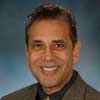 Minesh Mehta, MB, ChB, Professor, Department of Radiation Oncology, was the lead author of “Whole-Brain Radiotherapy and Stereotactic Radiosurgery in Brain Metastases: What is the Evidence?” in the American Society of Clinical Oncology Education Book, 2015;35:399–e104.
Minesh Mehta, MB, ChB, Professor, Department of Radiation Oncology, was the lead author of “Whole-Brain Radiotherapy and Stereotactic Radiosurgery in Brain Metastases: What is the Evidence?” in the American Society of Clinical Oncology Education Book, 2015;35:399–e104.
 Michael Miller, MD, FACC, FAHA, Professor, Department of Medicine, was among the co-authors on “Fasting Triglycerides Predict Recurrent Ischemic Events in Patients with Acute Coronary Syndrome Treated with Statins” in Journal of the American College of Cardiology, 2015 Jun 2;65(21):2267-75.
Michael Miller, MD, FACC, FAHA, Professor, Department of Medicine, was among the co-authors on “Fasting Triglycerides Predict Recurrent Ischemic Events in Patients with Acute Coronary Syndrome Treated with Statins” in Journal of the American College of Cardiology, 2015 Jun 2;65(21):2267-75.
 Pranshu Mohindra, MD, MBBS, Assistant Professor, Department of Radiation Oncology, was among the co-authors on “Medical Student Perspectives on a Multi-Institutional Clerkship Curriculum: A Report From the Radiation Oncology Education Collaborative Study Group” in International Journal of Radiation Oncology, Biology, Physics, 2015 Jun;92:217–219.
Pranshu Mohindra, MD, MBBS, Assistant Professor, Department of Radiation Oncology, was among the co-authors on “Medical Student Perspectives on a Multi-Institutional Clerkship Curriculum: A Report From the Radiation Oncology Education Collaborative Study Group” in International Journal of Radiation Oncology, Biology, Physics, 2015 Jun;92:217–219.
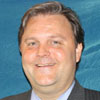 Terrence Mulligan, DO, MPH, Clinical Assistant Professor, Department of Emergency Medicine, along with colleagues from the United Kingdom, Australia, and other medical centers in the United States, published an article in the May issue of the Canadian Journal of Emergency Medicine, which presented a framework for a continuing professional development curriculum. The article was written on behalf of the International Federation for Emergency Medicine, as the third in a series that began with the publication of model curriculums for undergraduate (medical school) and graduate (residency) training. It also presents a detailed tabulation of the features of national continuing medical education programs in the US, the UK, Canada, Singapore, and China.
Terrence Mulligan, DO, MPH, Clinical Assistant Professor, Department of Emergency Medicine, along with colleagues from the United Kingdom, Australia, and other medical centers in the United States, published an article in the May issue of the Canadian Journal of Emergency Medicine, which presented a framework for a continuing professional development curriculum. The article was written on behalf of the International Federation for Emergency Medicine, as the third in a series that began with the publication of model curriculums for undergraduate (medical school) and graduate (residency) training. It also presents a detailed tabulation of the features of national continuing medical education programs in the US, the UK, Canada, Singapore, and China.
 Sanjay Rajagopalan, MBBS, FACC, FAHA, the Melvin Sharoky Endowed Professor in Cardiovascular Medicine, Department of Medicine, was among the co-authors on “Association of Carotid Intima-Media Thickness with Cardiovascular Risk Factors and Patient Outcomes in Advanced Chronic Kidney Disease: The RRI-CKD Study” in Clinical Nephrology, 2015 Jul;84(7):10-20. He was also among the co-authors on “Personalizing Your Airspace and Your Health” in Journal of the American College of Cardiology, 2015 Jun 2;65(21):2288-90, and on “Mortality from Myocardial Infarction in Chronic Obstructive Pulmonary Disease: Minding and Mending the ‘Gap’” in Heart, 2015 Jul 15;101(14):1085-6. Dr. Rajagopalan and Xiaoquan Rao, MD, PhD, Postdoctoral Fellow, Department of Medicine, were among the co-authors on “Ambient Air Pollution: An Emerging Risk Factor for Diabetes Mellitus” in Current Diabetes Reports, 2015 Jun;15(6):603. Dr. Rajagopalan and Matthew Peters, MD, Fellow, were among the co-authors on “HDL Cholesterol Efflux Capacity and Cardiovascular Events” in The New England Journal of Medicine, 2015 May 7;372(19):1869.
Sanjay Rajagopalan, MBBS, FACC, FAHA, the Melvin Sharoky Endowed Professor in Cardiovascular Medicine, Department of Medicine, was among the co-authors on “Association of Carotid Intima-Media Thickness with Cardiovascular Risk Factors and Patient Outcomes in Advanced Chronic Kidney Disease: The RRI-CKD Study” in Clinical Nephrology, 2015 Jul;84(7):10-20. He was also among the co-authors on “Personalizing Your Airspace and Your Health” in Journal of the American College of Cardiology, 2015 Jun 2;65(21):2288-90, and on “Mortality from Myocardial Infarction in Chronic Obstructive Pulmonary Disease: Minding and Mending the ‘Gap’” in Heart, 2015 Jul 15;101(14):1085-6. Dr. Rajagopalan and Xiaoquan Rao, MD, PhD, Postdoctoral Fellow, Department of Medicine, were among the co-authors on “Ambient Air Pollution: An Emerging Risk Factor for Diabetes Mellitus” in Current Diabetes Reports, 2015 Jun;15(6):603. Dr. Rajagopalan and Matthew Peters, MD, Fellow, were among the co-authors on “HDL Cholesterol Efflux Capacity and Cardiovascular Events” in The New England Journal of Medicine, 2015 May 7;372(19):1869.
 Jacques Ravel, PhD, Professor of Microbiology & Immunology and Associate Director, Genomics, Institute for Genome Sciences, was among the co-authors on “SINC, a Type III Secreted Protein of Chlamydia psittaci, Targets the Inner Nuclear Membrane of Infected Cells and Uninfected Neighbors” in Molecular Biology of the Cell, 2015 May 15;26(10):1918-34.
Jacques Ravel, PhD, Professor of Microbiology & Immunology and Associate Director, Genomics, Institute for Genome Sciences, was among the co-authors on “SINC, a Type III Secreted Protein of Chlamydia psittaci, Targets the Inner Nuclear Membrane of Infected Cells and Uninfected Neighbors” in Molecular Biology of the Cell, 2015 May 15;26(10):1918-34.
 William Regine, MD (pictured), Professor and the Isadore & Fannie Schneider Foxman Chair, and Navesh Sharma, DO, PhD, Assistant Professor, both in the Department of Radiation Oncology, were among the co-authors on “Adjuvant Chemoradiation in Pancreatic Cancer: A Pooled Analysis in Elderly (≥75 years) Patients” in Anticancer Research, 2015 Jun;35:3441–3446.
William Regine, MD (pictured), Professor and the Isadore & Fannie Schneider Foxman Chair, and Navesh Sharma, DO, PhD, Assistant Professor, both in the Department of Radiation Oncology, were among the co-authors on “Adjuvant Chemoradiation in Pancreatic Cancer: A Pooled Analysis in Elderly (≥75 years) Patients” in Anticancer Research, 2015 Jun;35:3441–3446.
 Anastasios Saliaris, MB, BCh, BAO, Assistant Professor; and Timm-Michael Dickfeld, MD, PhD, FACC, FHRS (pictured), Associate Professor, both from the Department of Medicine, were among the co-authors on “Freedom from Recurrent Ventricular Tachycardia after Catheter Ablation is Associated with Improved Survival in Patients with Structural Heart Disease” in Heart Rhythm, 2015 May 30 [Epub ahead of print]. Dr. Dickfeld was also among the co-authors on “Closing the Knowledge Gaps” in Circulation: Arrhythmia and Electrophysiology, 2015 Apr;8(2):252-5.
Anastasios Saliaris, MB, BCh, BAO, Assistant Professor; and Timm-Michael Dickfeld, MD, PhD, FACC, FHRS (pictured), Associate Professor, both from the Department of Medicine, were among the co-authors on “Freedom from Recurrent Ventricular Tachycardia after Catheter Ablation is Associated with Improved Survival in Patients with Structural Heart Disease” in Heart Rhythm, 2015 May 30 [Epub ahead of print]. Dr. Dickfeld was also among the co-authors on “Closing the Knowledge Gaps” in Circulation: Arrhythmia and Electrophysiology, 2015 Apr;8(2):252-5.
 Stephen Seliger, MD, MS (pictured), Associate Professor; John Gottdiener, MD, Professor; John Sorkin, MD, PhD, Professor; and Christopher deFilippi, MD, Associate Professor, all from the Department of Medicine; along with Robert Christenson, PhD, Professor, Department of Pathology, were among the co-authors on “Older Adults, ‘Malignant’ Left Ventricular Hypertrophy, and Associated Cardiac-Specific Biomarker Phenotypes to Identify the Differential Risk of New-Onset Reduced Versus Preserved Ejection Fraction Heart Failure: CHS (Cardiovascular Health Study)” in Journal of the American College of Cardiology: Heart Failure, 2015 Jun;3(6):445-55.
Stephen Seliger, MD, MS (pictured), Associate Professor; John Gottdiener, MD, Professor; John Sorkin, MD, PhD, Professor; and Christopher deFilippi, MD, Associate Professor, all from the Department of Medicine; along with Robert Christenson, PhD, Professor, Department of Pathology, were among the co-authors on “Older Adults, ‘Malignant’ Left Ventricular Hypertrophy, and Associated Cardiac-Specific Biomarker Phenotypes to Identify the Differential Risk of New-Onset Reduced Versus Preserved Ejection Fraction Heart Failure: CHS (Cardiovascular Health Study)” in Journal of the American College of Cardiology: Heart Failure, 2015 Jun;3(6):445-55.
 Terez Shea-Donohue, PhD, Professor, Department of Radiation Oncology, and Leon McLean, MD, MPH, PhD, Assistant Professor, Department of Medicine, were the senior and first authors, respectively, on “Type 3 Muscarinic Receptors Contribute to Clearance of Citrobacter rodentium” in Inflammatory Bowel Diseases, 2015 Aug;21(8):1860-71.
Terez Shea-Donohue, PhD, Professor, Department of Radiation Oncology, and Leon McLean, MD, MPH, PhD, Assistant Professor, Department of Medicine, were the senior and first authors, respectively, on “Type 3 Muscarinic Receptors Contribute to Clearance of Citrobacter rodentium” in Inflammatory Bowel Diseases, 2015 Aug;21(8):1860-71.
 Michael Shipley, PhD (pictured), the Donald E. Wilson, MD, MACP Distinguished Professor and Chair, and Adam Puche, PhD, Associate Professor, both from the Department of Anatomy & Neurobiology, were co-authors on “Cholinergic Inputs From Basal Forebrain Add an Excitatory Bias to Odor Coding in the Olfactory Bulb” in Journal of Neuroscience, 2015;34(14):4654-64. They were also co-authors on “The Olfactory System,” Chapter 27 in The Rat Nervous System, Edition 4 (G. Paxinos, Ed), 2014, and were among the co-authors on “Role of Intraglomerular Circuits in Shaping Temporally Structured Responses to Naturalistic Inhalation-Driven Sensory Input to the Olfactory Bulb” in Journal of Neurophysiology, 2015 February 25.
Michael Shipley, PhD (pictured), the Donald E. Wilson, MD, MACP Distinguished Professor and Chair, and Adam Puche, PhD, Associate Professor, both from the Department of Anatomy & Neurobiology, were co-authors on “Cholinergic Inputs From Basal Forebrain Add an Excitatory Bias to Odor Coding in the Olfactory Bulb” in Journal of Neuroscience, 2015;34(14):4654-64. They were also co-authors on “The Olfactory System,” Chapter 27 in The Rat Nervous System, Edition 4 (G. Paxinos, Ed), 2014, and were among the co-authors on “Role of Intraglomerular Circuits in Shaping Temporally Structured Responses to Naturalistic Inhalation-Driven Sensory Input to the Olfactory Bulb” in Journal of Neurophysiology, 2015 February 25.
 Nanette Steinle, MD, Associate Professor, Department of Medicine, was among the co-authors on “TAS2R Bitter Taste Receptors Regulate Thyroid Function” in FASEB Journal, 2015 Jan;29(1):164-72, and on “Implementation and Evaluation of the VA DPP Clinical Demonstration: Protocol for a Multi-Site Non-Randomized Hybrid Effectiveness-Implementation Type III Trial” in Implement Science, 2015 May 12;10(1):68.
Nanette Steinle, MD, Associate Professor, Department of Medicine, was among the co-authors on “TAS2R Bitter Taste Receptors Regulate Thyroid Function” in FASEB Journal, 2015 Jan;29(1):164-72, and on “Implementation and Evaluation of the VA DPP Clinical Demonstration: Protocol for a Multi-Site Non-Randomized Hybrid Effectiveness-Implementation Type III Trial” in Implement Science, 2015 May 12;10(1):68.
 Hervé Tettelin, PhD, Associate Professor of Microbiology & Immunology, Institute for Genome Sciences, was among the co-authors on “Essential Genes in the Core Genome of the Human Pathogen Streptococcus pyogenes” in Science, 2015 May 21;5:9838. He was also among the co-authors on the chapter “Genomics, Genetic Variation, and Regions of Differences” in Streptococcus pneumoniae: Molecular Mechanisms of Host-Pathogen Interactions, pp. 81-107, 2015, Academic Press, San Diego, CA, USA.
Hervé Tettelin, PhD, Associate Professor of Microbiology & Immunology, Institute for Genome Sciences, was among the co-authors on “Essential Genes in the Core Genome of the Human Pathogen Streptococcus pyogenes” in Science, 2015 May 21;5:9838. He was also among the co-authors on the chapter “Genomics, Genetic Variation, and Regions of Differences” in Streptococcus pneumoniae: Molecular Mechanisms of Host-Pathogen Interactions, pp. 81-107, 2015, Academic Press, San Diego, CA, USA.
 Michael Winters, MD (pictured), Associate Professor; Joseph Martinez, MD, Associate Professor; and Haney Mallemat, MD, Assistant Professor, all from the Department of Emergency Medicine, along with William Brady, MD, from the University of Virginia School of Medicine, published a review of recent critical care articles covering the topics of cardiac arrest, sepsis, pulmonary embolism, ultrasound, and acute ischemic stroke, in the June 2015 issue of the Journal of Emergency Medicine.
Michael Winters, MD (pictured), Associate Professor; Joseph Martinez, MD, Associate Professor; and Haney Mallemat, MD, Assistant Professor, all from the Department of Emergency Medicine, along with William Brady, MD, from the University of Virginia School of Medicine, published a review of recent critical care articles covering the topics of cardiac arrest, sepsis, pulmonary embolism, ultrasound, and acute ischemic stroke, in the June 2015 issue of the Journal of Emergency Medicine.
 Michael Witting, MD, MS (pictured), Associate Professor, and Siamak Moayedi, MD, Assistant Professor, both from the Department of Emergency Medicine, were among the co-authors on “Incidence of Advanced Intravenous Access in 2 Urban EDs” in the American Journal of Emergency Medicine, 2015 May;33(5):705-7. Other co-authors included Bryan Stover, MD, and Ashley Miller, BS, who were students at the University of Maryland School of Medicine at the time of the study and manuscript preparation. The investigators found a similar incidence (3.2%) in the need for advanced techniques to establish an IV line at UMMC’s adult ED and the ED at Mercy Medical Center. Their findings have implications for resource utilization, including strategies to minimize the delays in care that are associated with difficulty in gaining IV access.
Michael Witting, MD, MS (pictured), Associate Professor, and Siamak Moayedi, MD, Assistant Professor, both from the Department of Emergency Medicine, were among the co-authors on “Incidence of Advanced Intravenous Access in 2 Urban EDs” in the American Journal of Emergency Medicine, 2015 May;33(5):705-7. Other co-authors included Bryan Stover, MD, and Ashley Miller, BS, who were students at the University of Maryland School of Medicine at the time of the study and manuscript preparation. The investigators found a similar incidence (3.2%) in the need for advanced techniques to establish an IV line at UMMC’s adult ED and the ED at Mercy Medical Center. Their findings have implications for resource utilization, including strategies to minimize the delays in care that are associated with difficulty in gaining IV access.
 Laura Yerges-Armstrong, PhD, Assistant Professor, Department of Medicine, was among the co-authors on “The Impact of Genetics on Physical Resilience and Successful Aging” in Journal of Aging Health, 2015 Mar 27 [Epub ahead of print] and on (6):1084-104, and on “The Interplay of Genetics, Behavior, and Pain with Depressive Symptoms in the Elderly” in Gerontologist, 2015 June; 55(Suppl)1:S67-77. Dr. Yerges-Armstrong and Elizabeth Streeten, MD, Assistant Professor, Department of Medicine, were co-authors on “Rare Coding Variants and X-Linked Loci Associated with Age at Menarche” in Nature Communications, 2015 Mar 2 [Epub ahead of print].
Laura Yerges-Armstrong, PhD, Assistant Professor, Department of Medicine, was among the co-authors on “The Impact of Genetics on Physical Resilience and Successful Aging” in Journal of Aging Health, 2015 Mar 27 [Epub ahead of print] and on (6):1084-104, and on “The Interplay of Genetics, Behavior, and Pain with Depressive Symptoms in the Elderly” in Gerontologist, 2015 June; 55(Suppl)1:S67-77. Dr. Yerges-Armstrong and Elizabeth Streeten, MD, Assistant Professor, Department of Medicine, were co-authors on “Rare Coding Variants and X-Linked Loci Associated with Age at Menarche” in Nature Communications, 2015 Mar 2 [Epub ahead of print].
 Ruixin Zhang, PhD, Assistant Professor of Family & Community Medicine, Center for Integrative Medicine, was among the co-authors on “TRP Channel and Interleukin-17A Involvement in LTTL Gel Inhibition of Bone Cancer Pain in a Rat Model” in Integrative Cancer Therapies, 2015 Jul;14(4):381-93.
Ruixin Zhang, PhD, Assistant Professor of Family & Community Medicine, Center for Integrative Medicine, was among the co-authors on “TRP Channel and Interleukin-17A Involvement in LTTL Gel Inhibition of Bone Cancer Pain in a Rat Model” in Integrative Cancer Therapies, 2015 Jul;14(4):381-93.
 Jixin Zhong, MD, Assistant Professor; Andrei Maiseyeu, PhD, Assistant Professor; Stephen Davis, MBBS (pictured), Professor and the Dr. Theodore E. Woodward Chair; and Sanjay Rajagopalan, MBBS, FACC, FAHA, the Melvin Sharoky Endowed Professor in Cardiovascular Medicine, all from the Department of Medicine, were the co-authors on “DPP4 in Cardiometabolic Disease: Recent Insights From the Laboratory and Clinical Trials of DPP4 Inhibition” in Circulation Research, 2015 Apr 10;116(8):1491-504.
Jixin Zhong, MD, Assistant Professor; Andrei Maiseyeu, PhD, Assistant Professor; Stephen Davis, MBBS (pictured), Professor and the Dr. Theodore E. Woodward Chair; and Sanjay Rajagopalan, MBBS, FACC, FAHA, the Melvin Sharoky Endowed Professor in Cardiovascular Medicine, all from the Department of Medicine, were the co-authors on “DPP4 in Cardiometabolic Disease: Recent Insights From the Laboratory and Clinical Trials of DPP4 Inhibition” in Circulation Research, 2015 Apr 10;116(8):1491-504.
Congratulations to the following who have received honors!
 Philip Mackowiak, MD, MACP, Professor Emeritus, Department of Medicine and the Carolyn Frenkil and Selvin Passen History of Medicine Scholar-in-Residence, wrote an article entitled, “Eleanor Roosevelt’s Last Days,” which was nominated by Maxwell Sinsheimer, Editor, Reference, Oxford University Press, and selected for inclusion in the OUPblog 10th Anniversary e-book.
Philip Mackowiak, MD, MACP, Professor Emeritus, Department of Medicine and the Carolyn Frenkil and Selvin Passen History of Medicine Scholar-in-Residence, wrote an article entitled, “Eleanor Roosevelt’s Last Days,” which was nominated by Maxwell Sinsheimer, Editor, Reference, Oxford University Press, and selected for inclusion in the OUPblog 10th Anniversary e-book.
 Sanjay Rajagopalan, MBBS, FACC, FAHA, the Melvin Sharoky Endowed Professor in Cardiovascular Medicine, Department of Medicine, was inducted into the American Society for Clinical Investigation (ASCI) in April 2015. He was also named a 2015 member of the Association of University Cardiologists (AUC).
Sanjay Rajagopalan, MBBS, FACC, FAHA, the Melvin Sharoky Endowed Professor in Cardiovascular Medicine, Department of Medicine, was inducted into the American Society for Clinical Investigation (ASCI) in April 2015. He was also named a 2015 member of the Association of University Cardiologists (AUC).
Kudos to our colleagues who are experts in their fields and give their all to represent the School of Medicine!
 Vasken Dilsizian, MD, Professor, Department of Diagnostic Radiology & Nuclear Medicine, delivered the prestigious 2015 Henry N. Wagner, Jr., MD Highlights Lecture on “Cardiovascular Research” at the conclusion of Society of Nuclear Medicine and Molecular Imaging’s scientific sessions on June 10 at the Baltimore Convention Center.
Vasken Dilsizian, MD, Professor, Department of Diagnostic Radiology & Nuclear Medicine, delivered the prestigious 2015 Henry N. Wagner, Jr., MD Highlights Lecture on “Cardiovascular Research” at the conclusion of Society of Nuclear Medicine and Molecular Imaging’s scientific sessions on June 10 at the Baltimore Convention Center.
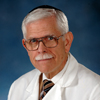 Robert Edelman, MD, Clinical Professor of Medicine and Pediatrics, Center for Vaccine Development, co-presented a 50-minute invited talk and discussion on “Defining Severity Markers for Acute Dengue Febrile Illness” at the Workshop on Dengue Clinical Case Classification for Clinical Research, held at the Fishers Lane Conference Center in Rockville, MD in April. The workshop was sponsored by the NIH, the World Health Organization, and the Partnership for Dengue Control.
Robert Edelman, MD, Clinical Professor of Medicine and Pediatrics, Center for Vaccine Development, co-presented a 50-minute invited talk and discussion on “Defining Severity Markers for Acute Dengue Febrile Illness” at the Workshop on Dengue Clinical Case Classification for Clinical Research, held at the Fishers Lane Conference Center in Rockville, MD in April. The workshop was sponsored by the NIH, the World Health Organization, and the Partnership for Dengue Control.
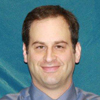 Benjamin Lawner, DO, MS, EMT-P, Assistant Professor, Department of Emergency Medicine, was a faculty member for the Maryland Resuscitation Academy, held May 18-19 in Columbia, MD. The goal of the two-day conference, co-hosted by the Howard County Department of Fire Rescue Services and the Maryland Institute for Emergency Medical Services Systems, was to provide education that will optimize outcomes after sudden cardiac arrest. The program, designed for prehospital care providers, is modeled after the Resuscitation Academy developed by Seattle Medic One and King County EMS in Washington state.
Benjamin Lawner, DO, MS, EMT-P, Assistant Professor, Department of Emergency Medicine, was a faculty member for the Maryland Resuscitation Academy, held May 18-19 in Columbia, MD. The goal of the two-day conference, co-hosted by the Howard County Department of Fire Rescue Services and the Maryland Institute for Emergency Medical Services Systems, was to provide education that will optimize outcomes after sudden cardiac arrest. The program, designed for prehospital care providers, is modeled after the Resuscitation Academy developed by Seattle Medic One and King County EMS in Washington state.
 Afshin Parsa, MD, MPH, Associate Professor, Department of Medicine, was invited as a Keynote Speaker at the 35th annual Korean Society of Nephrology conference in Seoul, Korea on May 22 and 23, where he presented “Genetic Diversity and Selection: A Double Edged Sword,” and “Genetics of CKD: What Have We Learned So Far?” He was also invited to present “Genetics of CKD: What Have We Learned So Far?” at the Ulsan National Institute of Science and Technology (UNIST) in Ulsan, Korea, on May 21.
Afshin Parsa, MD, MPH, Associate Professor, Department of Medicine, was invited as a Keynote Speaker at the 35th annual Korean Society of Nephrology conference in Seoul, Korea on May 22 and 23, where he presented “Genetic Diversity and Selection: A Double Edged Sword,” and “Genetics of CKD: What Have We Learned So Far?” He was also invited to present “Genetics of CKD: What Have We Learned So Far?” at the Ulsan National Institute of Science and Technology (UNIST) in Ulsan, Korea, on May 21.
 Toni Pollin, PhD, Associate Professor, Departments of Medicine and Epidemiology & Public Health, was an invited panelist at the workshop “Moving NHLBI-Supported Genetics Research Beyond the T2 Translation Barrier,” held in Bethesda, MD, in June, where she presented “Overcoming Barriers in Translation of Diabetes Genetics.”
Toni Pollin, PhD, Associate Professor, Departments of Medicine and Epidemiology & Public Health, was an invited panelist at the workshop “Moving NHLBI-Supported Genetics Research Beyond the T2 Translation Barrier,” held in Bethesda, MD, in June, where she presented “Overcoming Barriers in Translation of Diabetes Genetics.”
 Mark Rogers, PT, PhD, FAPTA, Professor & Chair, Department of Physical Therapy & Rehabilitation Science, was an invited speaker for the Human Physiology Lecture Series at the Department of Human Physiology at the University of Oregon in Eugene, OR, on April 24, where he presented “Neuromechanics of Stepping for Balance and Mobility in Aging and Neurological Disorders.”
Mark Rogers, PT, PhD, FAPTA, Professor & Chair, Department of Physical Therapy & Rehabilitation Science, was an invited speaker for the Human Physiology Lecture Series at the Department of Human Physiology at the University of Oregon in Eugene, OR, on April 24, where he presented “Neuromechanics of Stepping for Balance and Mobility in Aging and Neurological Disorders.”
 Lynn Schriml, PhD, Assistant Professor of Epidemiology & Public Health, Institute for Genome Sciences, was invited to speak on “The Human Disease Ontology: DO_Cancer_Slim - a Unified Representation of Cancer Disease Terms” and was session co-chair at NCI’s “The Role of Ontology in Cancer Big Data” symposium, held at the Fishers Lane Conference Center and NIH’s Natcher Center on May 12 &13.
Lynn Schriml, PhD, Assistant Professor of Epidemiology & Public Health, Institute for Genome Sciences, was invited to speak on “The Human Disease Ontology: DO_Cancer_Slim - a Unified Representation of Cancer Disease Terms” and was session co-chair at NCI’s “The Role of Ontology in Cancer Big Data” symposium, held at the Fishers Lane Conference Center and NIH’s Natcher Center on May 12 &13.
 Nanette Steinle, MD, Associate Professor, Department of Medicine, presented “Do My Genes Dictate What I Eat?” at the 75th Annual Meeting of the American Diabetes Association, held in Boston, MA, on June 6.
Nanette Steinle, MD, Associate Professor, Department of Medicine, presented “Do My Genes Dictate What I Eat?” at the 75th Annual Meeting of the American Diabetes Association, held in Boston, MA, on June 6.
We applaud our colleagues on their recent appointments!
Vasken  Dilsizian, MD, Professor, Department of Diagnostic Radiology & Nuclear Medicine, has been re-elected to the Board of Directors of the Society of Nuclear Medicine and Molecular Imaging for an additional three years (2015–2018).
Dilsizian, MD, Professor, Department of Diagnostic Radiology & Nuclear Medicine, has been re-elected to the Board of Directors of the Society of Nuclear Medicine and Molecular Imaging for an additional three years (2015–2018).
 Kevin Pereira, MBBS, MS(ORL), Professor, Departments of Otorhinolaryngology-Head & Neck Surgery and Pediatrics, has been appointed to consult on the Medical Devices and Drugs Committee for the American Academy of Otolaryngology for a two-year term beginning October 1.
Kevin Pereira, MBBS, MS(ORL), Professor, Departments of Otorhinolaryngology-Head & Neck Surgery and Pediatrics, has been appointed to consult on the Medical Devices and Drugs Committee for the American Academy of Otolaryngology for a two-year term beginning October 1.
We welcome our new faculty!
Jixin Zhong, MD, was appointed as an Assistant Professor in the Department of Medicine in January 2015. Dr. Zhong has spent the last five years training as a Postdoctoral Fellow in Dr. Sanjay Rajagopalan’s lab. Dr. Zhong’s research has added immensely to the area of how inflammation contributes to the pathogenesis of cardiometabolic disease.
A job well done to all who have kept us in the media spotlight!
 Claire Fraser, PhD, Professor of Medicine and Microbiology & Immunology, and Director of the Institute for Genome Sciences (IGS), was interviewed on May 15 by the Baltimore Sun for the article “UMSOM Research Sheds New Light on Probiotics.”
Claire Fraser, PhD, Professor of Medicine and Microbiology & Immunology, and Director of the Institute for Genome Sciences (IGS), was interviewed on May 15 by the Baltimore Sun for the article “UMSOM Research Sheds New Light on Probiotics.”
 Nicole Gloff, MD, Assistant Professor, and Robert White, LCPC, Clinical Assistant Professor, both in the Department of Psychiatry, appeared on the June 1 “Your Health” segment of Direct Connect, a live weekly program that is a partnership between Maryland Public Television (MPT) and the University of Maryland Medical System (UMMS). During this appearance, Dr. Gloff and White discussed how telemental health works and how it can improve access to mental health services to help those in areas of need.
Nicole Gloff, MD, Assistant Professor, and Robert White, LCPC, Clinical Assistant Professor, both in the Department of Psychiatry, appeared on the June 1 “Your Health” segment of Direct Connect, a live weekly program that is a partnership between Maryland Public Television (MPT) and the University of Maryland Medical System (UMMS). During this appearance, Dr. Gloff and White discussed how telemental health works and how it can improve access to mental health services to help those in areas of need.
 Karen Gordes, PT, DScPT, PhD, Assistant Professor, Department of Physical Therapy & Rehabilitation Science, had her presentation “Does Anti-Obesity Policy Make a Difference?” which she presented at the NEXT Conference & Exposition, held at National Harbor, MD from June 3–6, featured on the APTA website in the article “Anti-Obesity Policies: What Constitutes Success?”
Karen Gordes, PT, DScPT, PhD, Assistant Professor, Department of Physical Therapy & Rehabilitation Science, had her presentation “Does Anti-Obesity Policy Make a Difference?” which she presented at the NEXT Conference & Exposition, held at National Harbor, MD from June 3–6, featured on the APTA website in the article “Anti-Obesity Policies: What Constitutes Success?”
 David Rasko, PhD, Associate Professor of Microbiology & Immunology, Institute for Genome Sciences, was interviewed in the May 2015 issue of Motherboard magazine in an article called “Forget Fingerprints, In the Future We’ll Be Identified by Gut Bacteria.”
David Rasko, PhD, Associate Professor of Microbiology & Immunology, Institute for Genome Sciences, was interviewed in the May 2015 issue of Motherboard magazine in an article called “Forget Fingerprints, In the Future We’ll Be Identified by Gut Bacteria.”
 Nanette Steinle, MD, Associate Professor, Department of Medicine, was interviewed by Maryland Public Television on May 18, on the topic of Diabetes Prevention.
Nanette Steinle, MD, Associate Professor, Department of Medicine, was interviewed by Maryland Public Television on May 18, on the topic of Diabetes Prevention.
 Owen White, PhD, Professor of Epidemiology & Public Health and Associate Director, Institute for Genome Sciences, and Co-Director, Center for Health-Related Informatics, was interviewed for the Nasdaq GlobeNewswire story “Baltimore Poised to Become a World-Leading Hub of Multi-Billion Dollar Bioinformatics Industry.”
Owen White, PhD, Professor of Epidemiology & Public Health and Associate Director, Institute for Genome Sciences, and Co-Director, Center for Health-Related Informatics, was interviewed for the Nasdaq GlobeNewswire story “Baltimore Poised to Become a World-Leading Hub of Multi-Billion Dollar Bioinformatics Industry.”

